Long-term operation and dynamic response of dissimilatory nitrate reduction to ammonium process under low-frequency infrared electromagnetic field
Published in Earth & Environment

In recent years, dissimilatory nitrate reduction to ammonium (DNRA), which could convert nitrate to ammonium by two steps, has received increasing attention because of its ability to recover ammonium from wastewater with a high nitrate concentration. Electromagnetic field (EMF) is a new environmental factor, the level of which is increased as technology advances. In our previous work, we also found that the utilization of low-frequency infrared electromagnetic fields (IR-EMF) has the potential to enhance partial nitrification and anammox activity. Here, the use of IR-EMF to stimulate fermentative DNRA was explored for the first time.
Our results showed that the optimal IR-EMF intensity of 0.04 μT could effectively improve DNRA activity of nonwoven fabric membrane bioreactors. In the long-term operation, the average ammonium conversion efficiency was enhanced by 117.7% and 62.5% under 0.04 μT and 0.06 μT IR-EMF, respectively. The highest nrfA-gene abundance and potential DNRA rate were obtained under 0.04 μT IR-EMF exposure.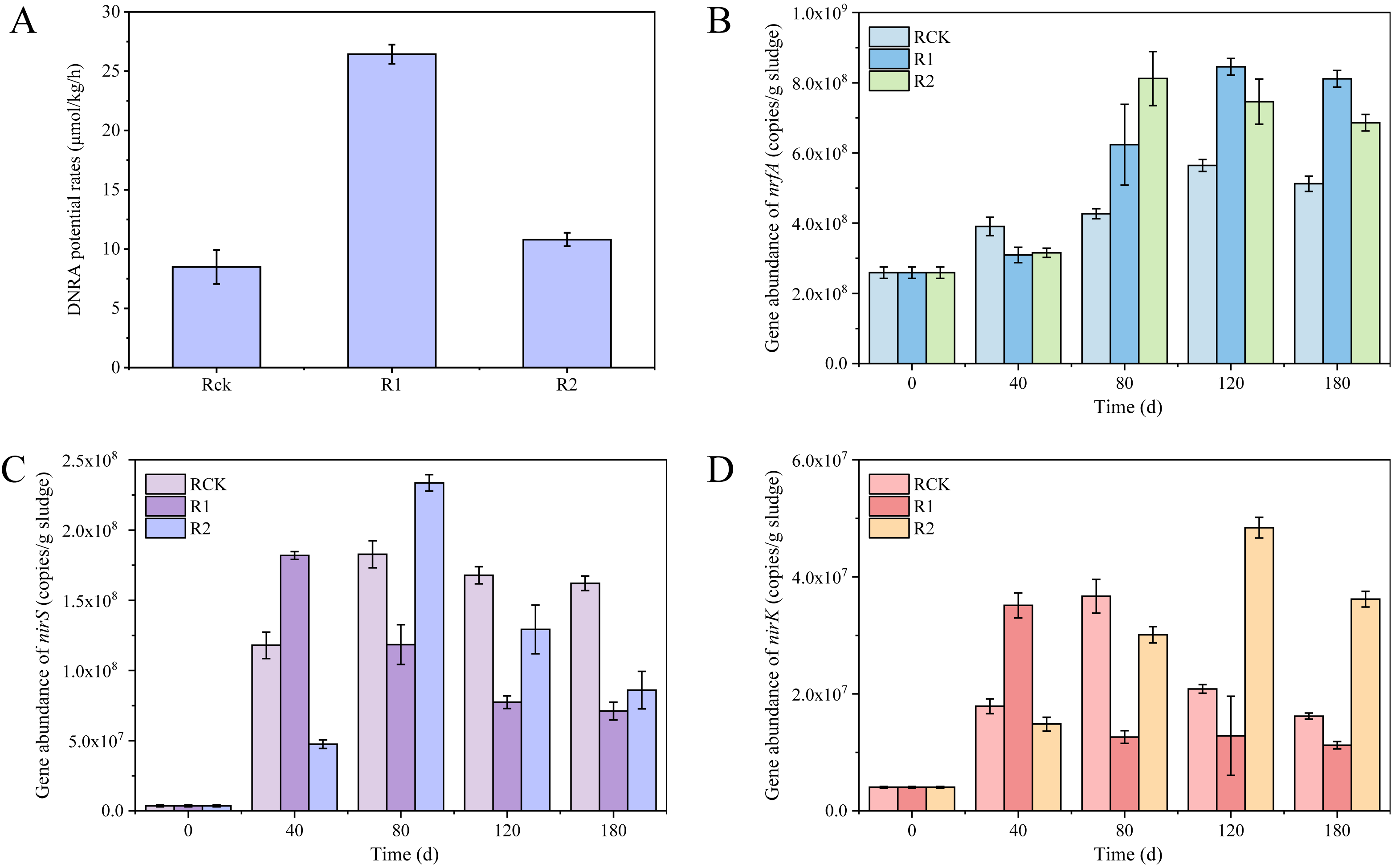 Fig. 1 Potential DNRA rates during stable operation on day 120 (A) and results of q-PCR for functional genes of nrfA (B), nirS (C), nirK (D). Error bars represent the standard deviation.
Fig. 1 Potential DNRA rates during stable operation on day 120 (A) and results of q-PCR for functional genes of nrfA (B), nirS (C), nirK (D). Error bars represent the standard deviation.
Moreover, Bacteroidetes fragilis, Shewanelle oneidensis MR-1, and Thauera sp. RT1901 were selected to investigate the dynamic response of nitrogen transformation and energy metabolism to IR-EMF. The transcriptome sequencing and RT-qPCR results suggested that IR-EMF could enhance both denitrification and DNRA process, mainly by improving ATP synthesis to boost metabolic activity. 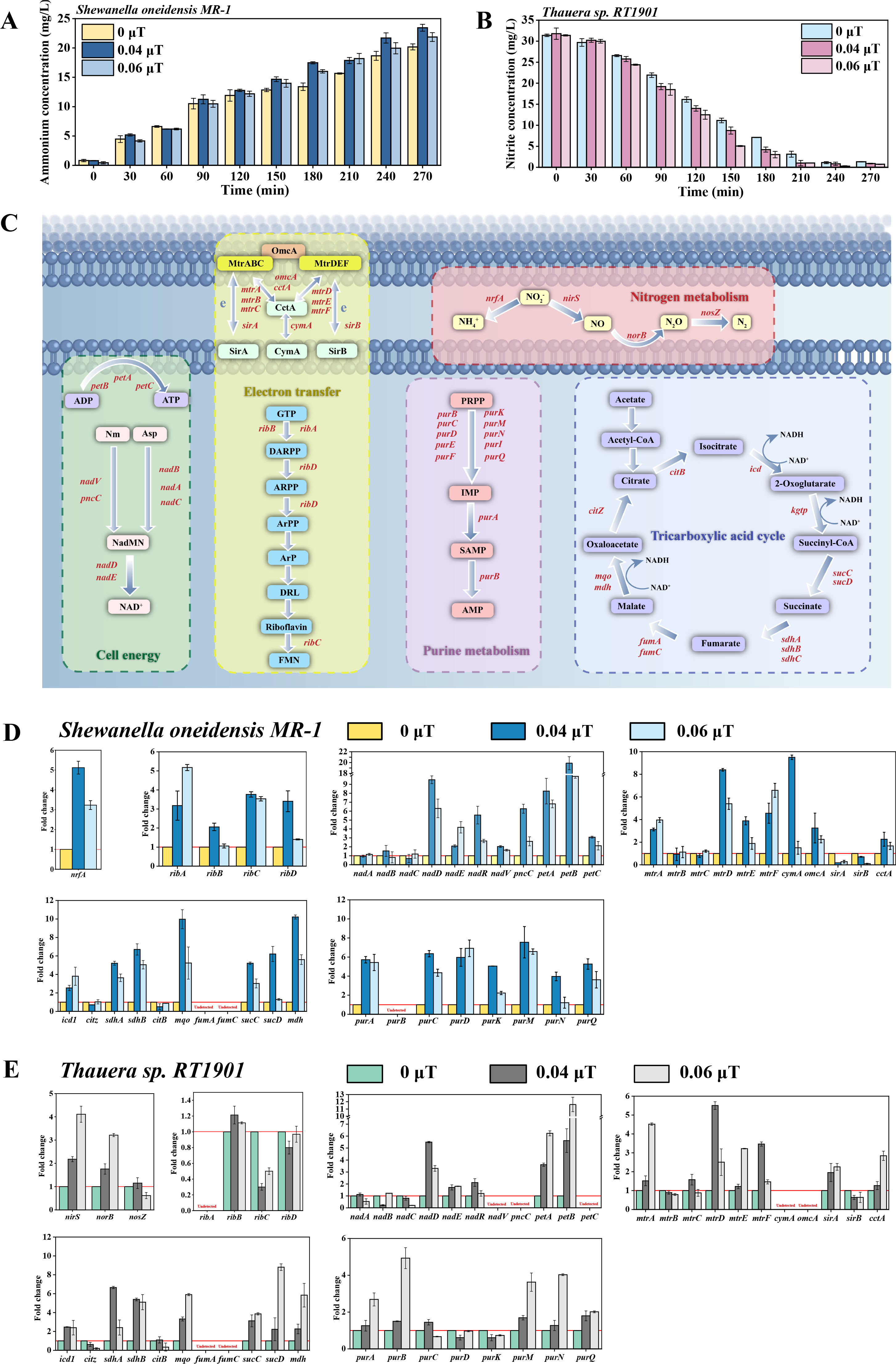
Fig. 2 The nitrogen performance of Shewanelle oneidensis MR-1 (A) and Thauera sp. RT1901 (B) under different IR-EMFs. The metabolic schematic of cell energy, electron transfer, purine metabolism, tricarboxylic acid cycle, and nitrogen metabolism (C). The RT-qPCR results related to functional genes of Shewanelle oneidensis MR-1 (D) and Thauera sp. RT1901 (E) under different IR-EMFs. Error bars represent the standard deviation.
In summary, the effect of IR-EMF on the microbial community structure and nitrogen transformation of DNRA process were evaluated using mixed bacteria culture and pure culture. Our work found new possibilities for enhanced DNRA performance and its applications, potentially revolutionizing the recovery of ammonium from wastewater. We also encourage the broader scientific community to build upon our work. The processed data from our study are publicly available, and we encourage other researchers to utilize them, expand on our findings, and advance the field further.
Follow the Topic
-
npj Clean Water

This journal publishes high-quality papers which report cutting-edge science, technology, application, policy and societal issues that contribute towards a more sustainable supply of clean water.
Related Collections
With Collections, you can get published faster and increase your visibility.
Water Testing: Microbial Innovations in Sustainable Wastewater Treatment
Publishing Model: Open Access
Deadline: Dec 31, 2025
Advancing Artificial Intelligence Innovations for Resilient and Sustainable Clean Water: Novel Methodologies and Case Studies
Publishing Model: Open Access
Deadline: Feb 28, 2026

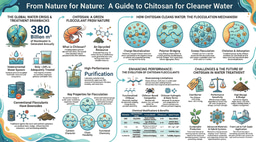
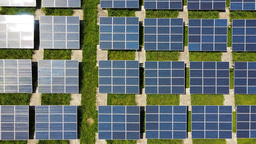
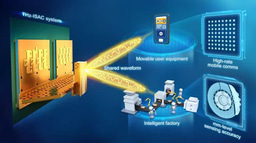
Please sign in or register for FREE
If you are a registered user on Research Communities by Springer Nature, please sign in